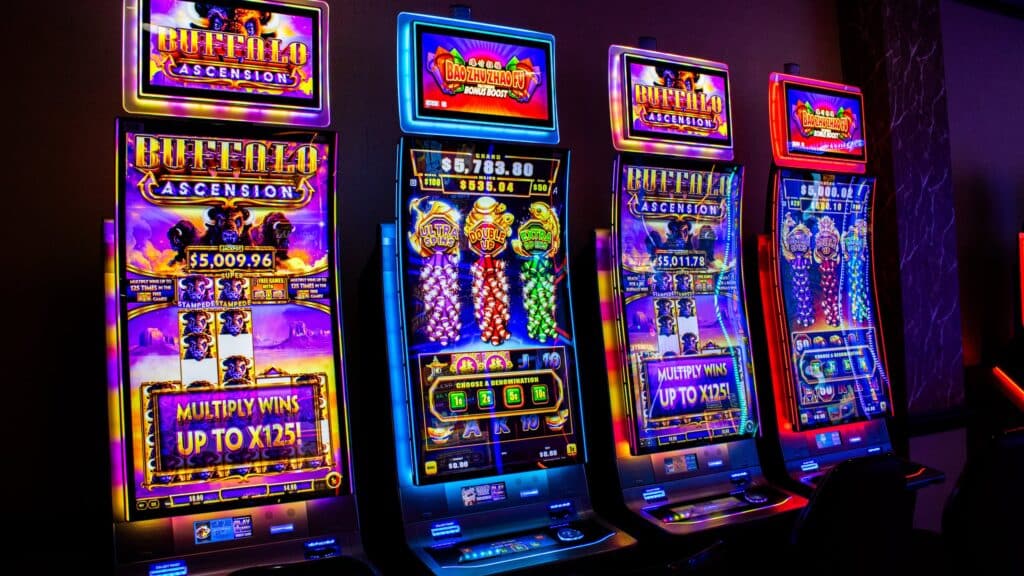Slot machines are among the most popular games in casinos worldwide, both online and in land-based venues. With their flashing lights, exciting themes, and the promise of big wins, they offer an irresistible draw to players. But what is the true science behind how these machines work, and how can understanding their Return to Player (RTP) help you maximize your chances of winning? In this article, we’ll break down the concept of RTP in slot machines, explore its significance, and offer tips for understanding how to choose the right slot for your gameplay.
What is RTP in Slot Machines?
RTP, or Return to Player, is a percentage that indicates how much a slot machine will return to players over time. Specifically, RTP is the average amount of money a player can expect to win back from a slot game for every $100 wagered. For instance, a slot machine with an RTP of 95% will, on average, pay back $95 for every $100 wagered in the long run. The RTP value is calculated over millions of spins, and it’s important to remember that it does not guarantee any particular outcome on a single spin or in the short term.
How Does RTP Affect Slot Gameplay?
Understanding RTP is crucial for setting expectations and making informed decisions when playing slots. While RTP does not guarantee consistent winnings, it provides an idea of how a machine is programmed to payout over time. A higher RTP generally indicates a more favorable slot for players, as it means the machine will return a larger portion of the wagers in the form of wins. Conversely, a lower RTP suggests that the machine keeps more of the wagers, which may make it a riskier game to play.
How RTP is Calculated
RTP is determined by the slot's programming and takes into account various elements such as the frequency of wins, the size of the wins, and the payout structure. To calculate the RTP, slot developers run simulations over a large number of spins, typically millions, to generate the average payout percentage.
For example, if a slot machine has an RTP of 96%, it means that, theoretically, for every $100 wagered across all players, $96 will be returned in winnings, and the remaining $4 will be kept by the casino. However, this is not a guarantee for any single session or player, as RTP is an average calculated over many plays.
Why Does RTP Matter to Slot Players?
As a slot player, knowing the RTP of a game helps you make more informed decisions. While the RTP does not predict the outcome of individual spins, it can guide your choice of games and influence your strategy. Here’s why RTP matters:
- Maximizing Your Bankroll: By choosing slots with higher RTPs, you can potentially extend your gameplay and reduce the impact of volatility. This gives you more opportunities to hit winning combinations.
- Understanding Risk and Reward: Slots with higher RTPs tend to have more frequent but smaller payouts, while those with lower RTPs may offer bigger, less frequent wins. Knowing the RTP allows you to choose a machine that aligns with your playing style and risk tolerance.
- Setting Realistic Expectations: While RTP is a helpful tool for understanding the overall payout structure, it’s essential to remember that it reflects long-term averages. In the short term, anything can happen, so RTP should not be the sole factor guiding your decisions.
RTP vs. Volatility: What’s the Difference?
While RTP is a critical factor in selecting the right slot, it’s important to also consider volatility, or variance, when making your choice. Volatility refers to the risk level associated with a particular game, and it complements the RTP value. Here’s how the two compare:
Understanding Slot Volatility
Slot volatility is a measure of how often a slot pays out and how large the payouts are. There are three main types of volatility:
- Low Volatility: These slots pay out frequently but in smaller amounts. While the wins may not be large, they tend to occur regularly. Slots with low volatility are ideal for players who prefer a steady flow of smaller wins and less risk.
- Medium Volatility: These slots strike a balance between frequent small wins and occasional larger payouts. Players who prefer a mix of excitement and consistency often opt for medium-volatility slots.
- High Volatility: High-volatility slots offer large payouts but much less frequently. Players willing to take on higher risks for the chance of big wins are typically drawn to high-volatility games.
While RTP gives you an idea of how much you can expect to win on average, volatility tells you how often you can expect to win. A high-RTP slot can still be high or low volatility, so it’s important to evaluate both factors when choosing a slot game to play.
Slot Machine RTP: How It Varies Between Games
The RTP of slot machines can vary significantly depending on the game. Different game developers may use different mathematical models to determine the RTP, and casinos may also offer different settings for the same game. Here’s how RTP can vary across different types of slot machines:
Classic Slots vs. Video Slots
Classic slots, which often feature three reels and a single payline, tend to have higher RTPs on average than video slots. Video slots, with their five reels, bonus features, and complex graphics, may offer lower RTPs because of the added complexity and larger jackpot potentials. However, some video slots come with high RTP values, so it’s important to check the game’s details before playing.
Progressive Jackpot Slots
Progressive jackpot slots, which feature ever-growing jackpots, usually have lower RTPs. This is because a portion of every wager made on the game contributes to the jackpot pool. While progressive slots offer the potential for life-changing wins, their RTP tends to be lower, as a significant part of the wager goes towards funding the jackpot.
Branded Slots
Branded slots, based on popular movies, TV shows, or celebrities, can offer exciting themes and bonus features. However, these slots may have slightly lower RTPs than unbranded games, as a portion of the game's development cost is tied to licensing fees. Players interested in branded slots should be aware of this potential difference in RTP.
How to Find RTP Information for Slot Machines
Before you start playing a slot machine, it’s essential to check its RTP to make an informed decision. Most online casinos will display the RTP of their slot games in the game’s information or paytable section. If you're playing a land-based slot, the RTP may not be directly available, but you can often find the information by searching for the game online or visiting the developer’s website.
How RTP Affects Your Strategy
Knowing the RTP of a game allows you to approach your gameplay with a more strategic mindset. Here are some tips for integrating RTP into your strategy:
- Choose Slots with High RTP: If your goal is to maximize your bankroll, opt for slots with a higher RTP. Games in the 95%-98% range are generally more favorable for players.
- Balance RTP with Volatility: If you prefer frequent, smaller wins, choose low-volatility games with a high RTP. For bigger thrills and larger payouts, consider high-volatility slots with a lower RTP.
- Don’t Rely on RTP Alone: RTP is a useful guideline, but it’s not a guarantee. Always balance your expectations with the understanding that variance, luck, and timing all play significant roles in slot outcomes.
Conclusion: Understanding RTP for Smarter Slot Play
Mastering the science of Return to Player (RTP) is crucial for every slot player, whether you’re a novice or an advanced player looking to refine your strategy. RTP gives you a sense of how a slot game is programmed to return money to players over time, but it’s important to balance this knowledge with an understanding of volatility and other game features. While RTP provides an edge, slot machines remain games of chance, and no strategy can guarantee a win. By choosing the right games and setting realistic expectations, you can enhance your overall casino experience and make more informed decisions that align with your playing style.



